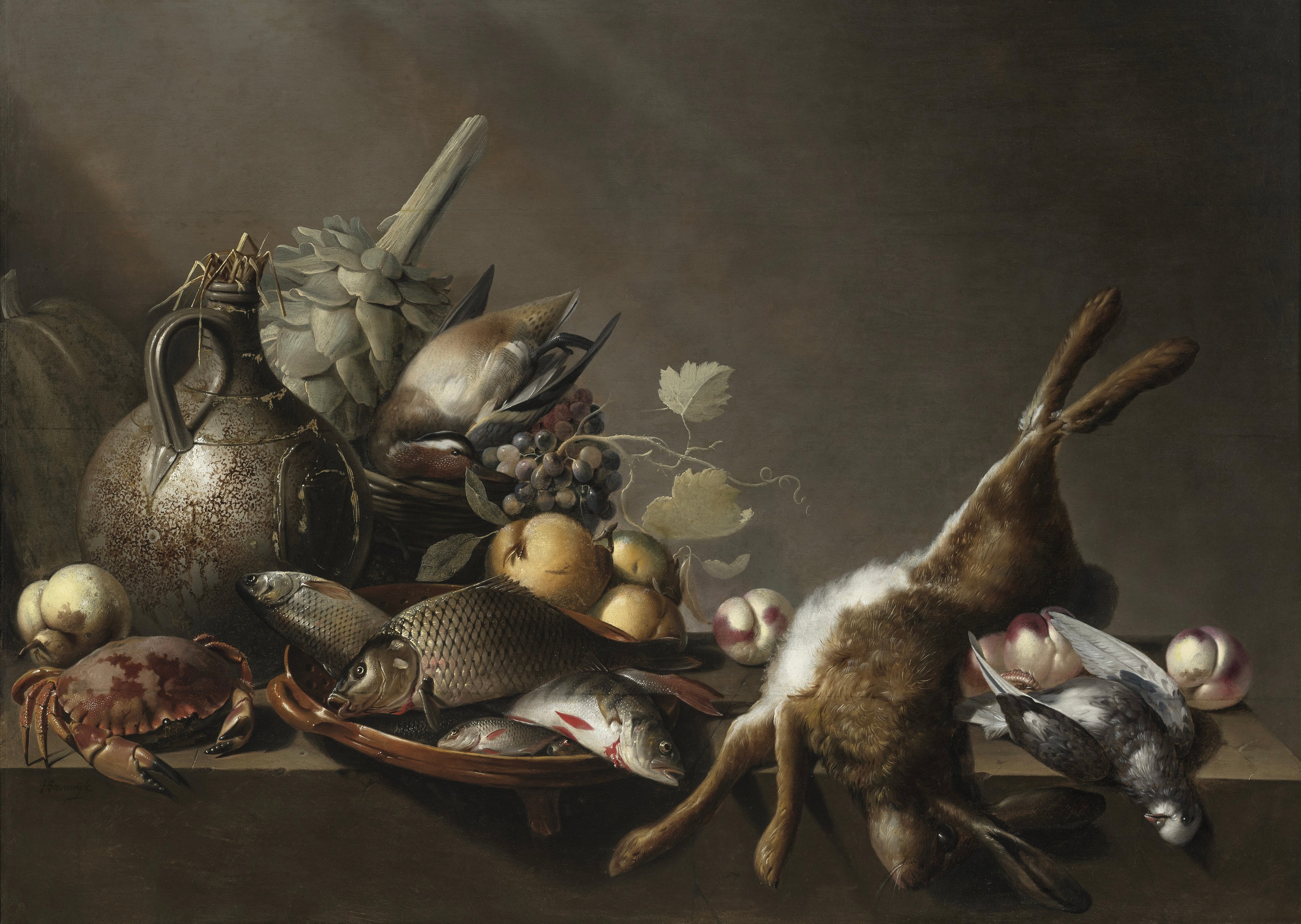
Harmen Steenwyck's still life stages hunting prey, fish and fruit in precise detail. The painting combines sensual abundance with a subtle reminder of the transience of earthly things.
Abundance and transience
In his still life, Harmen Steenwyck (1612-1656) stages a scene of abundance on a tabletop with a dark background. In the right foreground lies a dead hare with its legs stretched upwards, next to it a dove surrounded by bright, reddish peaches.
On the left of the picture are a large stone jug and an overflowing fruit basket with grapes, pears, an artichoke and another hunted bird. In front of this, several gleaming fish are draped on a plate, next to a red-spotted crab with open claws.
The multitude of precisely depicted natural products from hunting, fishing and the garden symbolizes sensual pleasure and material wealth on the one hand, but also refers to their transience on the other. The painting thus unites two opposing levels: It shows the beauty of the earthly – and at the same time reminds us of its finiteness.